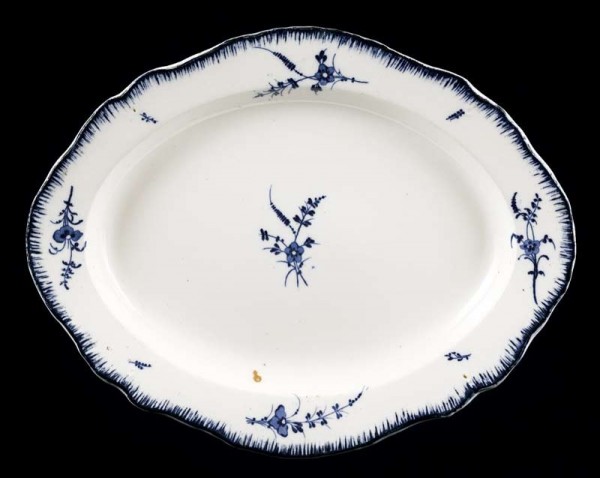
Dish, Cauldon Works, Hanley, Stoke-on-Trent, England, 1894–1905. Whiteware. L. 14 1/2". Impressed: “CAULDON”; “14”; printed mark: “England” (Author’s collection; unless otherwise noted, all photos by Gavin Ashworth.)
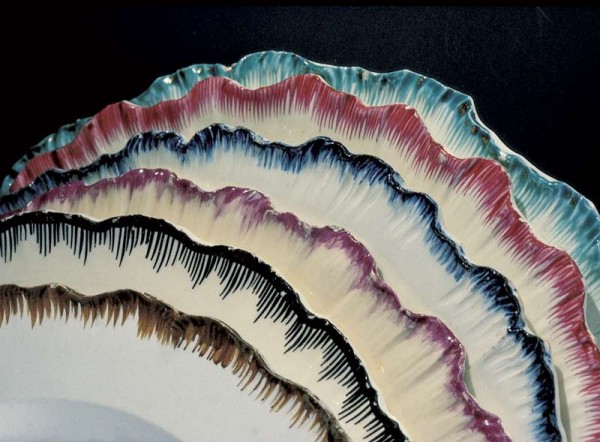
Group of creamware and pearlware shell-edge plates illustrating the range of colors of enamel and underglaze decoration, Staffordshire and Yorkshire, England, 1780–1790. (Courtesy, Colonial Williamsburg Foundation; photo, Hans Lorenz.)
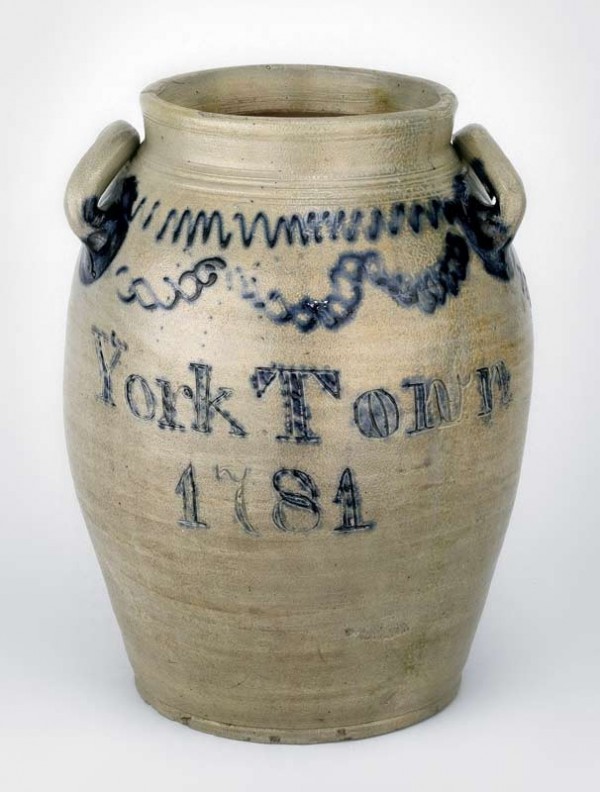
Storage jar, attributed to William H. Morgan, Baltimore, ca. 1824. Salt-glazed stoneware. H. 13 3/4". Inscribed on both sides: “York Town / 1781” (Private collection.)

Pitcher, attributed to William H. Morgan, Baltimore, 1820–1825. Salt-glazed stoneware. Dimensions not recorded. Capacity: 5 gallons. (Private collection.)
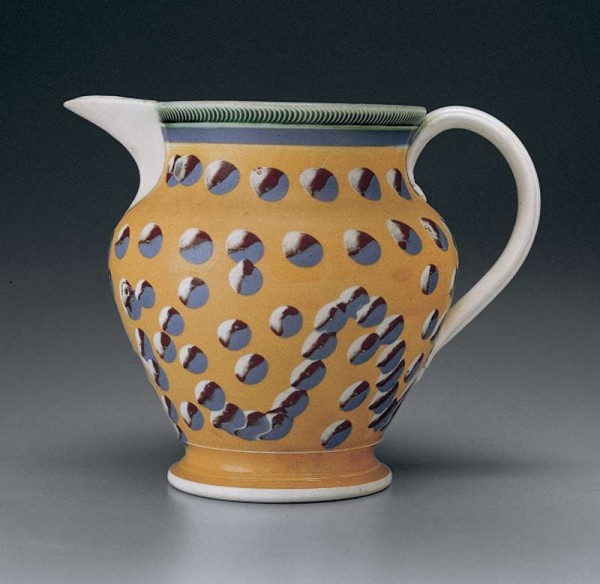
Jug, Great Britain, ca. 1835. Pearlware. H. 6 3/4". (Courtesy, Jonathan Rickard.)
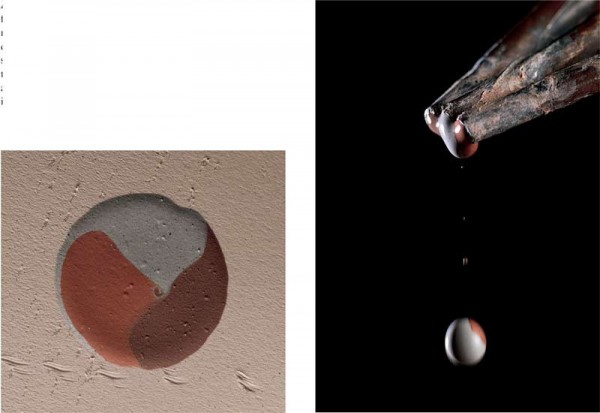
Close-up views of the three colors of slip as they emerge from the three tubes of the slip cup. They form a single droplet yet maintain the individual colors that will compose any of the types of decoration for which this tool is used. At right, note the smaller, secondary droplet falling behind the tricolored droplet falling from the slip cup. The image below shows a single cat’s-eye immediately after the slip fell onto a dry surface. A secondary cat’s-eye is visible in the center of the larger one.
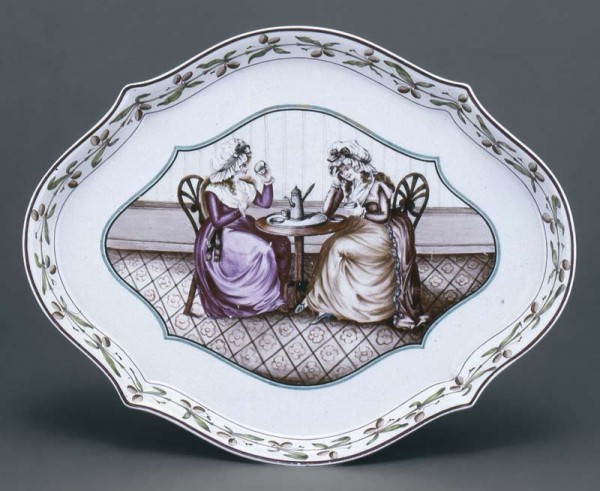
Tray, James Neale and Robert Wilson Company, Staffordshire, England, ca. 1790. Porcelain. L. 15". (Courtesy, Colonial Williamsburg Foundation.)
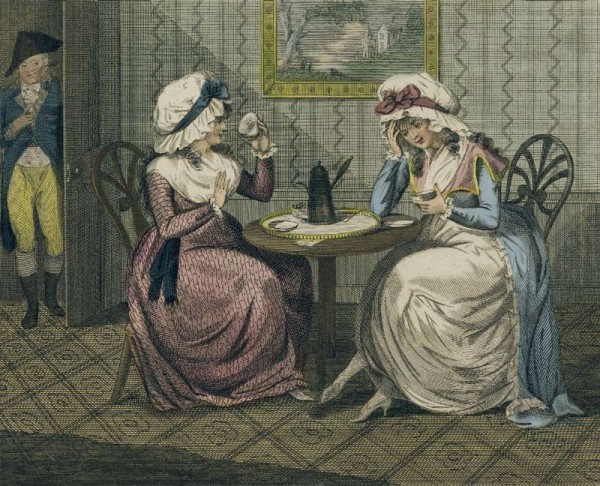
Robert Sayer, Telling Fortune in Coffee Grounds, London, April 10, 1790. Colored engraving on laid paper. (Courtesy, Lewis Walpole Library, Yale University.)
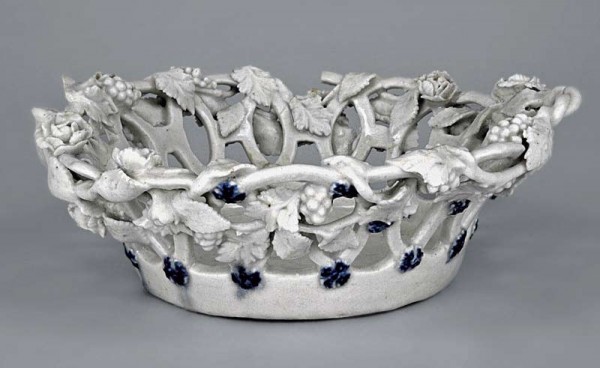
Basket, American China Manufactory (Bonnin and Morris), Philadelphia, Pennsylvania, April 23, 1773. Soft-paste porcelain. W. (including handles) 6". Mark, inscribed on base in underglaze blue: “PHILADELFIA / the 23 April 1773 / 4.7” (Courtesy, Colonial Williamsburg Foundation.)

Detail of the bottom of the basket illustrated in fig. 9.

Inkstand, William Crolius, New York, New York, 1773. Salt-glazed stoneware. W. 5 1/2". Inscribed, on bottom: “New York July 12 1773 / William Crolius” (Courtesy, Metropolitan Museum of Art, Partial and Promised Gift of David Bronstein, 2012; 2012.574a–c.)

Detail of the inscription on the bottom of the inkstand illustrated in fig. 11.

An “exploded” view of the clay components that make up a Bonnin and Morris pickle stand. Each of these molded and modeled objects had to be prepared prior to assembly. More than seventy separated elements were required to re-create this object. (Courtesy, Michelle Erickson.)
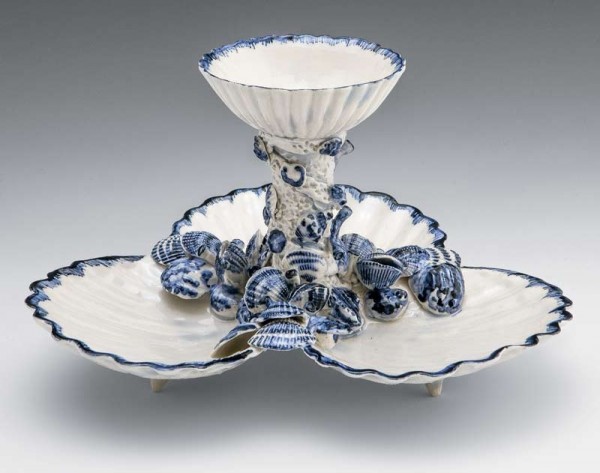
Pickle stand, Michelle Erickson, Hampton, Virginia, 2007. Porcelain. H. 5 1/2". (Author’s collection; photo, Robert Hunter.)
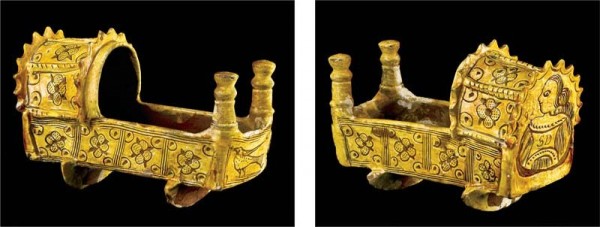
Cradle, North Devon, England, 1698. Sgraffito slipware. L. 9". Inscribed: “[16]98 / SD” (Private collection.)
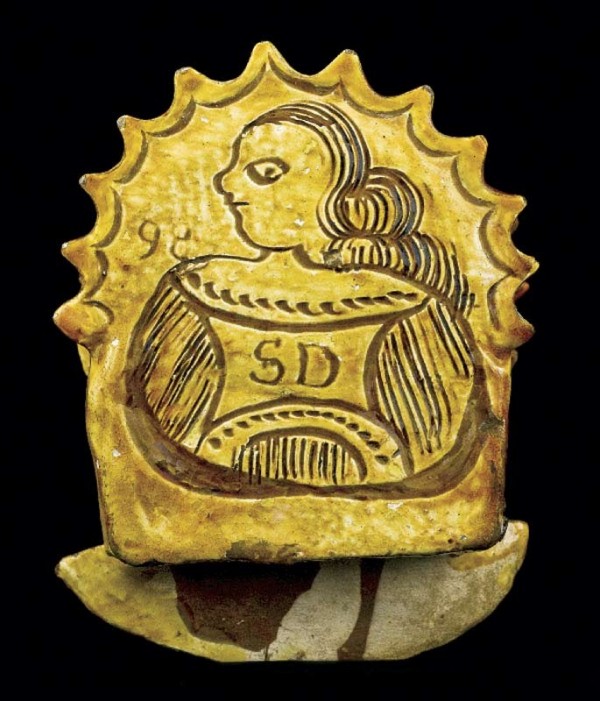
Detail of the end panel of the cradle illustrated in fig. 15.
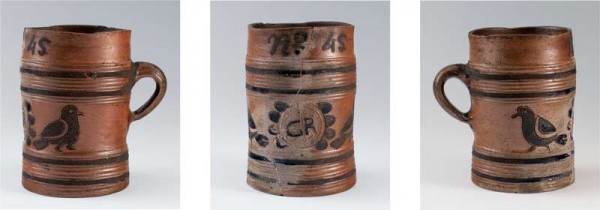
Mug, James Morgan, Morgan pottery, Cheesequake, New Jersey, 1775–1785. Salt-glazed stoneware. H. 6 1/4". Mark: inscribed “No. 45” (Private collection; photo, Robert Hunter.)
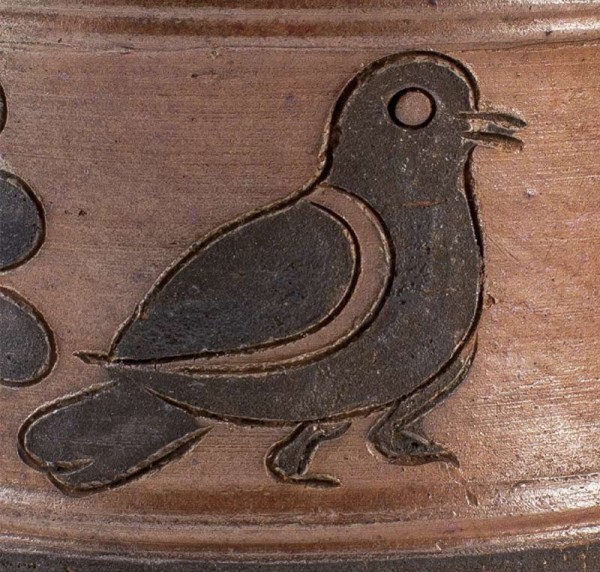
Detail of the incised bird from the mug illustrated in fig. 17.
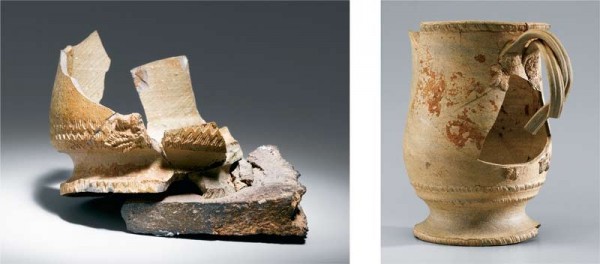
Left: Mug fragment adhered to kiln prop, Salem, North Carolina, 1774–1786. Bisque earthenware. Right: Mug, Salem, North Carolina, ca. 1774–1786. Bisque earthenware. H. 5 7/8". (Collection of Old Salem Museums & Gardens.)

Cream jug, John Bartlam and Associates, probably Camden, South Carolina, 1775–1780. Lead-glazed earthenware. H. 4 1/8". (Private collection; photo, Robert Hunter.)
